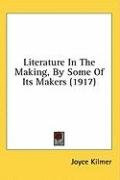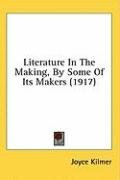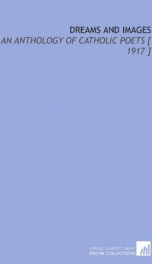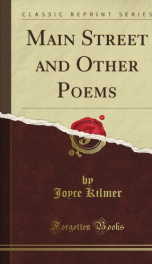Kilmer Joyce

Alfred Joyce Kilmer Alfred Joyce Kilmer (December 6, 1886 – July 30, 1918) was an American journalist, poet, literary critic, lecturer, and editor. Though a prolific poet whose works celebrated the common beauty of the natural world as well as his religious faith, Kilmer is remembered most for a short poem entitled Trees (1913), which was published in the collection Trees and Other Poems in 1914. While most of his works are unknown, a select few of his poems remain popular and are published frequently in anthologies. Several critics, both Kilmer's contemporaries and modern scholars, disparaged Kilmer's work as being too simple, overly sentimental, and suggested that his style was far too traditional, even archaic. At the time of his deployment to Europe during the first World War (1914–1918), Kilmer was considered the leading American Catholic poet and lecturer of his generation, whom critics often compared to British contemporaries G. K. Chesterton (1874–1936) and Hilaire Belloc (1870–1953).[1][2][3] A sergeant in the 165th U.S. Infantry Regiment, Kilmer was killed at the Second Battle of Marne in 1918 at the age of 31. kilmer was born December 6, 1886 in New Brunswick, New Jersey, the fourth and youngest child[a] of Annie Ellen Kilburn (1849–1932)[4] and Dr. Frederick Barnett Kilmer (1851–1934), a physician and analytical chemist employed by the Johnson and Johnson Company and inventor of the company's baby powder.[5][6][7] Joyce was named Alfred Joyce Kilmer after Alfred R. Taylor, the curate; and the Rev. Dr. Elisha Brooks Joyce (1857–1926), the rector of Christ Church, the oldest Episcopal parish in New Brunswick, where the Kilmer family were parishioners.[8][9] Rector Joyce, who served the parish from 1883 to 1916, baptised the young Kilmer.[10] Kilmer's birthplace in New Brunswick, where the Kilmer family lived from 1886 to 1892, is still standing, and houses a small museum to Kilmer, as well as a few Middlesex County government offices.[11] Kilmer entered the Rutgers College Grammar School (now Rutgers Preparatory School) in 1895 at the age of 8. During his years at the Grammar School, he.... After graduating from the Rutgers College Grammar School in 1904, he continued his education at Rutgers College from 1904 to 1906. At Rutgers, Kilmer was associate editor of the Targum, the campus newspaper and a member of the Delta Upsilon fraternity. Unable to complete the rigorous mathematics requirement in the curriculum at Rutgers, facing a repeat of his sophomore year and under pressure from his mother, Kilmer transferred to Columbia College of Columbia University in New York City.[13] At Columbia, Kilmer was vice-president of the Philolexian Society, associate editor of Columbia Spectator, the campus newspaper, and was a member of the Debating Union. He completed his Bachelor of Arts (A.B.) degree and was graduated from Columbia on May 23, 1908.[14] Shortly after graduation, on June 9, 1908, he married Aline Murray (1888–1941), a fellow poet to whom he had been engaged since his sophomore year at Rutgers.[14][15] The Kilmers had five children: Kenton Sinclair Kilmer (1909–1995), Michael Barry Kilmer (1916–1927), Deborah ("Sister Michael") Clanton Kilmer (1914–1999) who was a Catholic nun at the Saint Benedict’s Monastery, Rose Kilburn Kilmer (1912–1917), and Christopher Kilmer (1917–1984).[6][16] Shortly after his marriage and graduation from Columbia, Kilmer sought teaching positions. In the autumn of 1908, he obtained a position teaching Latin at Morristown High School in Morristown, New Jersey, and finding that teaching did not demand much of his time, he found considerable time to dedicate to writing. At this time, he submitted essays to Red Cross Notes (including his first published piece, an essay on the "Psychology of Advertising") and poems to Moods, Smart Set, The Sun, The Pathfinder and The Bang. In addition to all this, he wrote book reviews for The Literary Digest, Town & Country, The Nation, and The New York Times. By June 1909, Kilmer had abandoned any aspirations to continue teaching and relocated to New York City, the literary and publishing mecca of the United States, deciding to focus solely on a career as a writer.[17] From 1909–1912, Kilmer was employed by Funk and Wagnalls, which was preparing an edition of The Standard Dictionary. According to Hillis, Shortly after the publication of The Standard Dictionary in 1912, Kilmer became a special writer for the New York Times Review of Books and the New York Times Sunday Magazine and was often engaged in lecturing. Kilmer and his family then moved to Mahwah, New Jersey, where he resided until his service and death in World War I. Kilmer at this time was established as a published poet, and as a popular lecturer. According to Robert Holliday, Kilmer "frequently neglected to make any preparation for his speeches, not even choosing a subject until the beginning of the dinner which was to culminate in a specimen of his oratory. His constant research for the dictionary, and, later on, for his New York Times articles, must have given him a store of knowledge at his fingertips to be produced at a moment's notice for these emergencies."[19] In 1911, Kilmer's first book of verse, entitled Summer of Love was published. Kilmer would later write that "...some of the poems in it, those inspired by genuine love, are not things of which to be ashamed, and you, understanding, would not be offended by the others."[20] The Kilmers' daughter Rose (1912–1917) was stricken with Poliomyelitis (also known as infantile paralysis) shortly after birth. The Kilmers turned to their religious faith, and in correspondence between Joyce Kilmer and Father James J. Daly, Joyce and Aline began a conversion to Catholicism into which they were received in 1913. In one of these letters, Kilmer writes: The year 1913 approached Kilmer in trials of suffering and faith but also in success. With the publication of "Trees" in the magazine Poetry, Kilmer gained immense popularity as a poet across the United States. At this time his popularity and success as a lecturer, particularly one seeking to reach a Catholic audience, led Robert Holliday to write: "It is not an unsupported assertion to say that he was in his time and place the laureate of the Catholic Church."[19] Trees and Other Poems (1914) was published the following year. The next few years saw an immense output of work, with Kilmer continuing his lecturing, his literary criticism and essays, writing poetry, and finding the time in 1915 to become poetry editor of Current Literature and contributing editor of Warner's Library of the World's Best Literature. After the publication of The Circus and Other Essays in 1916, the following year would see the publication of three books, Literature in the Making, Main Street and Other Poems, and Dreams and Images: An Anthology of Catholic Poets. Within a few days after the United States declared war on Germany and entered the first World War in April 1917, Kilmer enlisted in the Seventh Regiment of the New York National Guard. In August, Kilmer was initially assigned as a statistician with the U.S. 69th Infantry Regiment (better known as the "Fighting 69th" and later redesignated the 165th Infantry Regiment), of the 42nd "Rainbow" Division, and quickly rose to the rank of Sergeant. Though he was eligible for commission as an officer and often recommended for such posts during the course of the war, Kilmer refused stating that he would rather be a sergeant in the Fighting 69th than an officer in any other regiment.[23] In September, before Kilmer was deployed, the Kilmer family was met with both the contrary emotions of tragedy and rejoicing. The Kilmer's daughter Rose had died, and twelve days later, their son Christopher was born.[24] Kilmer sailed to Europe with his regiment on October 31, 1917, arriving in France two weeks later. Before his departure, Kilmer had contracted with publishers to write a book about the war, deciding upon the title Here and There with the Fighting Sixty-Ninth. Kilmer wrote home, stating "I have not written anything in prose or verse since I got here - except statistics - but I've stored up a lot of memories to turn into copy when I get a chance."[25] Unfortunately, Kilmer never was to write such a book. During his time in Europe, Kilmer did write prose sketches and poetry, most notably the poem "Rouge Bouquet", which was written after the First Battalion of the 42nd Division, which had been occupying the Rouge Bouquet forest northeast of the French village of Baccarat, which at the time was a quiet sector of the front—was struck by a heavy artillery bombardment on the afternoon of March 12, 1918 that buried 21 men of the unit, of which 14 remained entombed.[26][27][28] Kilmer sought more hazardous duty and was transferred to the Regimental Intelligence Section, in April 1918. He wrote to his wife, Aline that, "Now I'm doing work I love - and work you may be proud of. None of the drudgery of soldiering, but a double share of glory and thrills."[29] According to Hillis: During the Second Battle of Marne, there was heavy fighting throughout the last days of July 1918, and on July 30, 1918, Kilmer volunteered to accompany Major William "Wild Bill" Donovan when Donovan's First Battalion was sent to lead the day's attack. During the course of the day, Kilmer led a scouting party to find the position of a German machine gun. When his comrades found him, some time later, they thought at first that he was peering over the edge of a little hill, where he had crawled for a better view. When he did not answer their call, they ran to him and found him dead. According to Father Duffy: “A bullet had pierced his brain. His body was carried in and buried by the side of Ames. God rest his dear and gallant soul.”[30] Kilmer died, likely immediately, from a sniper's bullet to the head near Muercy Farm, beside the Oureq River near the village of Seringes, in France, on July 30, 1918 at the age of 31.[31] For his valor, Kilmer was posthumously awarded the Croix de Guerre (Cross of War) by the French Republic.[32] Kilmer was buried in the Oise-Aisne American Cemetery and Memorial, near Fere-en-Tardenois, Aisne, Picardy, France. Although Kilmer is buried in France in an American military cemetery, a cenotaph is located on the Kilmer family plot in Elmwood Cemetery, in New Brunswick, New Jersey. A memorial service was held at St. Patrick's Cathedral in Manhattan.[33]
do you like this author?
What readers are saying
What do you think? Write your own comment on this book!
write a commentWhat readers are saying
What do you think? Write your own comment on this author!
write a commentBook list

The Circus,and Other Essays and Fugitive Pieces
Series:
Unknown
Year:
Unknown
Raiting:
4.5/5
Show more
add to favoritesadd In favorites
Book list

The Circus,and Other Essays and Fugitive Pieces
Series:
Unknown
Year:
Unknown
Raiting:
4.5/5
Show more
add to favoritesadd In favorites

literature in the making by some of its makers
Series:
Unknown
Year:
Unknown
Raiting:
4.5/5
A collection from 23 authors about their points of view about the labor of writing literature. Some of the writers are William Dean Howells, Kathleen Norris, Booth Tarkington, Montague Glass, Rex Beach, Robert W. Chambers, James Allen, Harry Wilson, Arthur Guiterman, Frank H. Spearman, John Erskine, John Burroughs, Amy Lowell, Kathleen Norris, Will Harben, Fanny Hurst, Ellen Glasgow, and others. --This text refers to the Paperback edition.
Show more
add to favoritesadd In favorites

literature in the making
Series:
Unknown
Year:
Unknown
Raiting:
3/5
A collection from 23 authors about their points of view about the labor of writing literature. Some of the writers are William Dean Howells, Kathleen Norris, Booth Tarkington, Montague Glass, Rex Beach, Robert W. Chambers, James Allen, Harry Wilson, Arthur Guiterman, Frank H. Spearman, John Erskine, John Burroughs, Amy Lowell, Kathleen Norris, Will Harben, Fanny Hurst, Ellen Glasgow, and others. --This text refers to the Paperback edition.
Show more
add to favoritesadd In favorites

dreams and images an anthology of catholic poets
Series:
Unknown
Year:
Unknown
Raiting:
1.5/5
Originally published in 1917. This volume from the Cornell University Library's print collections was scanned on an APT BookScan and converted to JPG 2000 format by Kirtas Technologies. All titles scanned cover to cover and pages may include marks notations and other marginalia present in the original volume.
Show more
add to favoritesadd In favorites

Main Street and Other Poems
Series:
Unknown
Year:
Unknown
Raiting:
4/5
ILIKE to look at the blossomy track of the moonupon the sea, But it isn't half so fine a sight as Main Street used to beWhen it all was covered over with a couple offeet of snow, And over the crisp and radiant road the ringingsleighs would go.Now, Main Street bordered with autumn leaves,it was a pleasant thing, And its gutters were gay with dandelions early inthe Spring;I like to think of it white with frost or dusty in the heat,Because I think it is humaner than any other street.Table of Contents Main Street 13; Roofs 16; The Snowman in the Yard 19; A Blue Valentine22; Houses 26; In Memory 28; Apology 31; The Proud Poet 34; Lionel Johnson 38; Father Gerard Hopkins, SJ 39; Gates and Doors 40; The Robe of Christ 43; The Singing Girl 47; The Annunciation 48; Roses 49; The Visitation 51; Multiplication 52; Thanksgiving 54; The Thorn 55; The Big Top 56; Queen Elizabeth Speaks 60; Mid-ocean in War-time 61; In Memory of Rupert Brooke 62; The New School 63; Easter Week 66; The Cathedral of Rheims 68; Kings 73; The White Ships and the Red 74About the Publisher Forgotten Books is a publisher of historical writings, such as: Philosophy, Classics, Science, Religion, History, Folklore and Mythology.Forgotten Books' Classic Reprint Series utilizes the latest technology to regenerate facsimiles of historically important writings. Careful attention has been made to accurately preserve the original format of each page whilst digitally enhancing the difficult to read text. Read books online for free at www.forgottenbooks.org
Show more
add to favoritesadd In favorites
What readers are saying
What do you think? Write your own comment on this author!
write a commentif you like Kilmer Joyce try:
readers also enjoyed
What readers are saying
What do you think? Write your own comment on this author!
write a commentGenre
if you like Kilmer Joyce try:
readers also enjoyed
Do you want to read a book that interests you? It’s EASY!
Create an account and send a request for reading to other users on the Webpage of the book!


